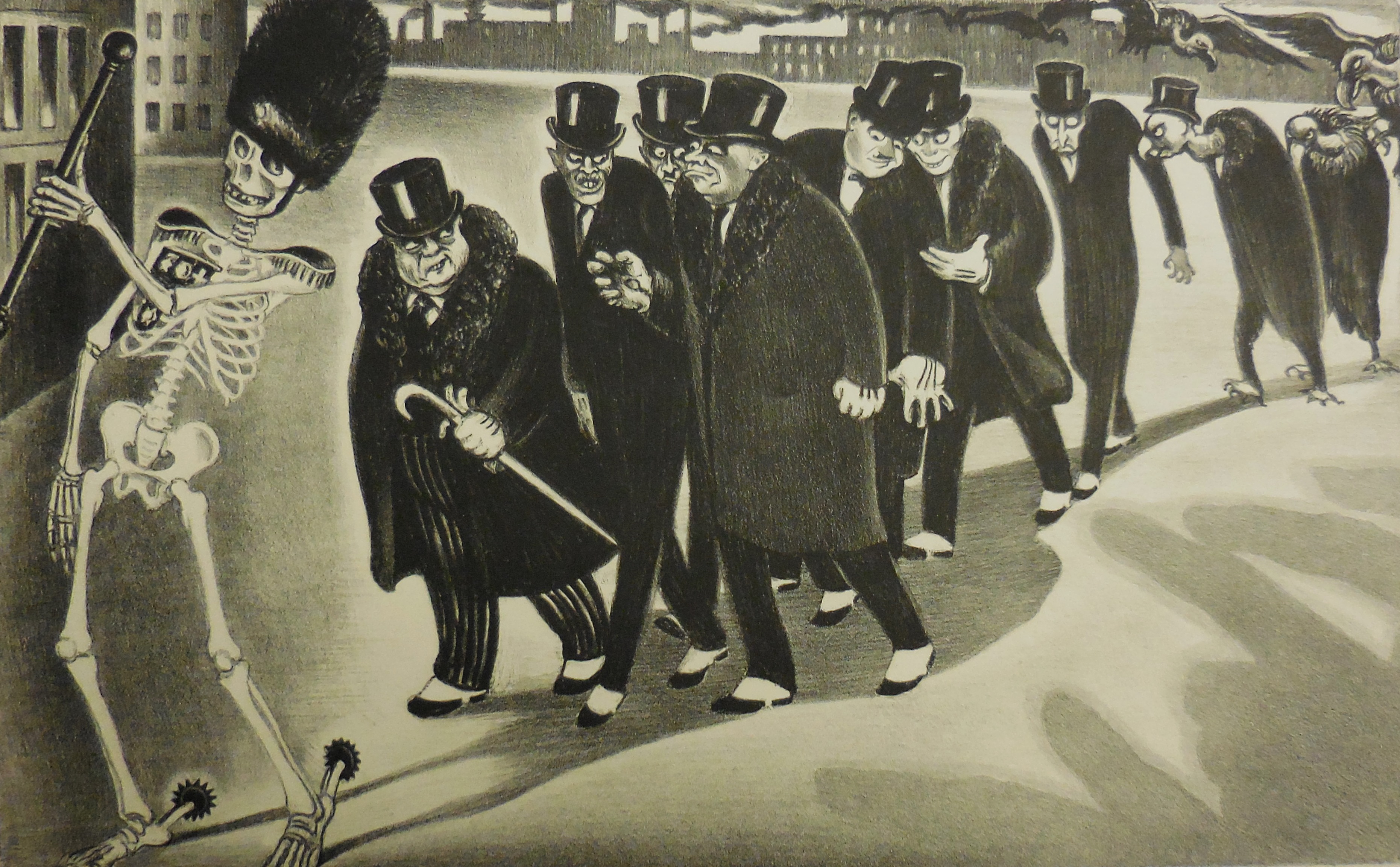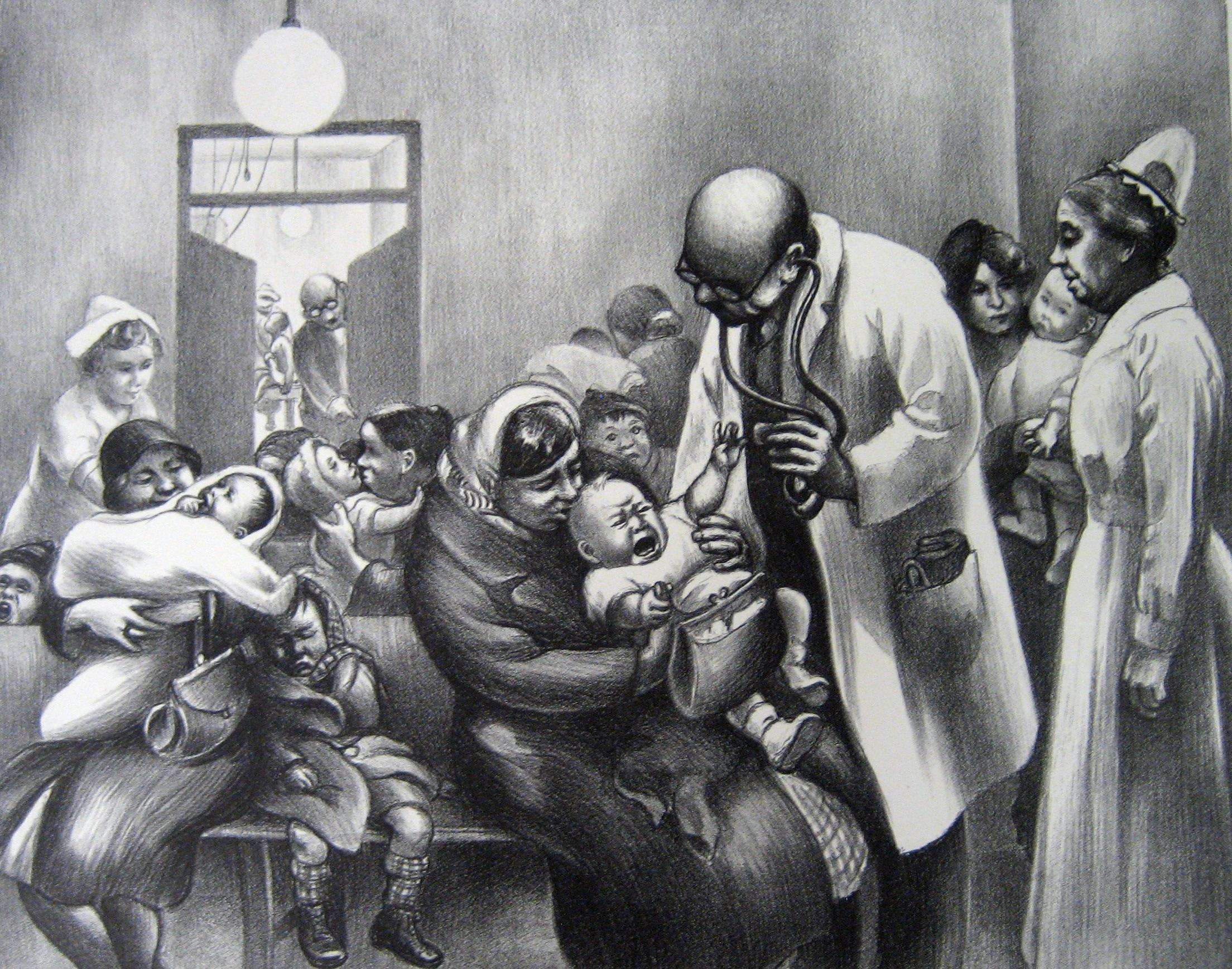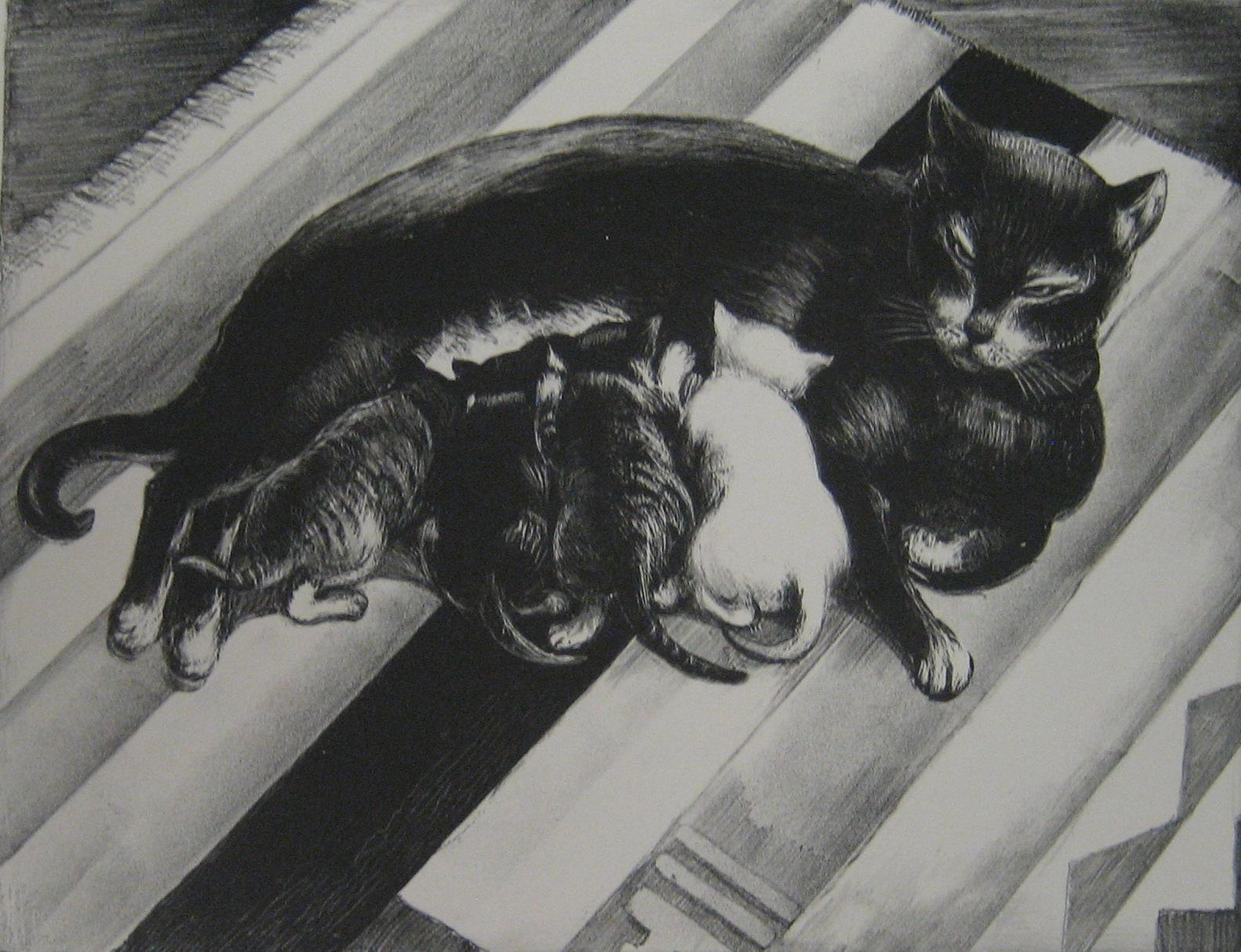Today I'll introduce you to the first of a couple of women lithographers I'd like to highlight: Mabel Dwight (1876-1955).
 |
| Mabel Dwight, Self-Portrait, 1932, lithograph. Image courtesy of http://americanart.si.edu/collections/search/artist/?id=1373 |
Mabel Dwight was born in Ohio. She was at least partially deaf (the extent of her hearing loss remains debated among scholars), so she became an astute observer of society to compensate for her hearing.
Dwight studied painting at the Hopkins School of Art in San Fransisco, but she wouldn't begin practicing her own art until much later. After marrying Eugene Higgins in 1906, she put her own artistic career on the backburner in order to support her husband. That marriage ended eleven years later, and Dwight returned to her own studies.
Dwight became interested in lithography while traveling in Paris during the 1920s. Invented in the late eighteenth century, lithography is a versatile yet challenging printmaking process. To make a lithograph, an artist draws onto a stone with an oily, ink-receptive crayon or other substance. The stone is then inked, rinsed, and pressed onto a piece of paper, transferring the image. Since the late nineteenth century, Paris had been one of the centers of artistic lithography, and was famous for its workshops, or ateliers, which collaborated with artists on their prints.
Dwight took up lithography after returning from her travels, and she achieved critical renown for her humorous, sympathetic prints of daily life. She often focused on human subjects, particularly people on excursions to venues such as theatres, zoos, and aquariums.
 |
| Mabel Dwight, The Brothers (Monkey House), 1928, lithograph. Image courtesy of http://www.paramourfinearts.com/list_works.asp?id=105&t=1 |
 |
| Mabel Dwight, Fish, 1928, lithograph. Image courtesy of http://www.ifpda.org/content/node/9121 |
 |
| Mabel Dwight, Houston Street Burlesque, 1928, lithograph. Image courtesy of https://www.liveauctioneers.com/item/793572 |
 |
| Mabel Dwight, Stick-Em-Up, 1928, lithograph. Image courtesy of http://www.ifpda.org/content/node/5292 |
 |
| Mabel Dwight, Queer Fish, 1936, lithograph. Image courtesy of http://www.paramourfinearts.com/list_works.asp?id=105&t=1 |
As a museum professional, what I like about these works is that they focus on the visitors' experiences to these places, what they're seeing, how they react to the sights around them, and so forth. I particularly like the aquarium scenes with their atmospheric character.
 |
| Mabel Dwight, Merchants of Death, 1935, lithograph. Image courtesy of http://www.paramourfinearts.com/list_works.asp?id=105&t=1 |
During the 1930s, Dwight produced more politcally charged, anti-Facist images for the W.P.A, but she also continued to create sympathetic portrayals of everyday people.
 |
| Mabel Dwight, Children's Clinic, 1936, lithograph. Image courtesy of http://www.paramourfinearts.com/list_works.asp?id=105&t=1 |
Dwight found it increasingly difficult to make a living as she got older, especially with changing tastes in the arts, but today her works are admired for their sense of humor and sympathy.
The RMAC has a couple of Dwight's prints. One of them is The Family, which was one of several feline-themed prints she created. It's currently on view in the RMAC exhibit Seeing Cats and Dogs. Howard Cook donated it to the Museum in 1967, along with several other works by American printmakers.
 |
| Mabel Dwight, The Family, 1928, lithograph. Image courtesy of http://www.paramourfinearts.com/list_works.asp?id=105&t=1 |
Dwight endows this lithograph with a subtle air of domesticity. The mother cat and her kittens are not outdoors, exposed to the elements, but are shown lying on a striped rug placed over a wooden floor. The striped coats of three kittens echo the stripes of the rug, visually linking the feline group with the interior space. A single white kitten further connects the cats with their surroundings by paralleling the rug’s white stripes.
Aside from the quality of her art, I admire Dwight for taking up lithography so boldly as a woman in her 50s. In our youth-obsessed culture, it's refreshing to see an older person take up a new passion and find personal and professional success from it. I think it's a lesson from which we can all benefit.
Want to learn more? Here are a few sites for you:
http://clara.nmwa.org/index.php?g=entity_detail&entity_id=9867
http://gerrie-thefriendlyghost.blogspot.com/2014/01/mabel-dwight-also-in-old-new-york.html
http://www.paramourfinearts.com/list_works.asp?id=105&t=1









Comments
Post a Comment
Questions? Comments? Speak your mind here.